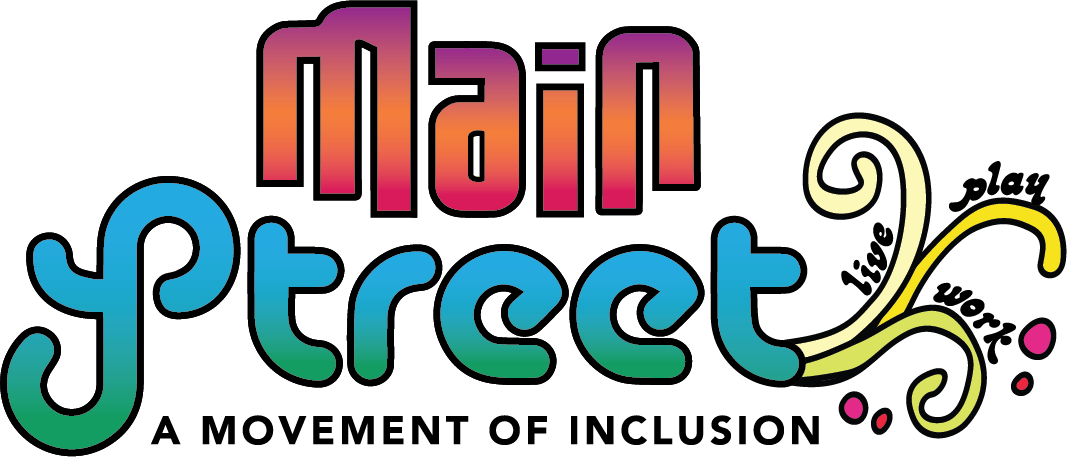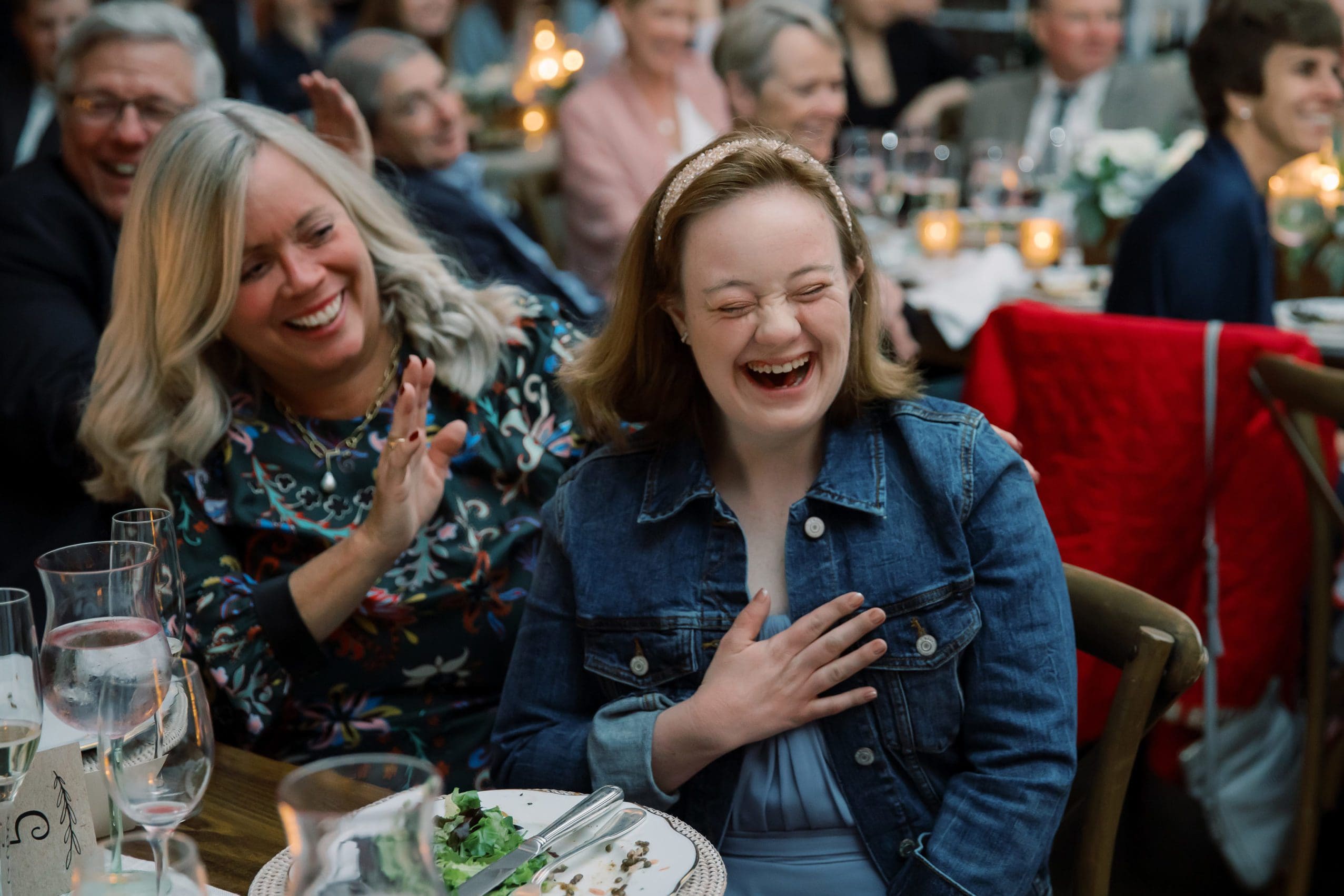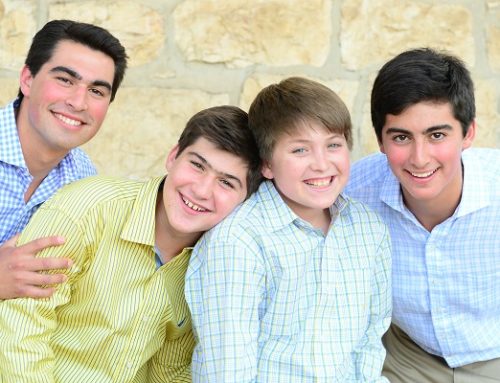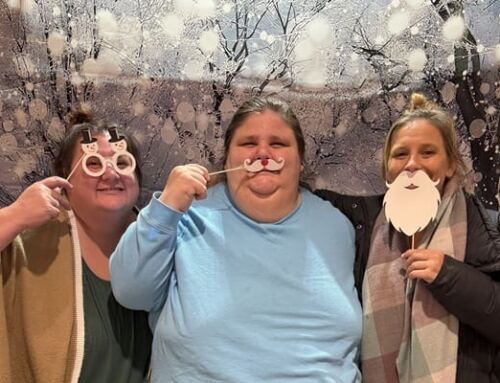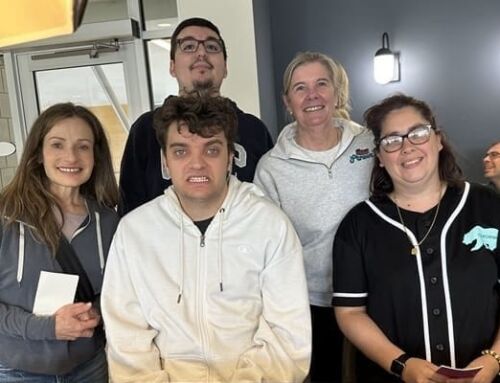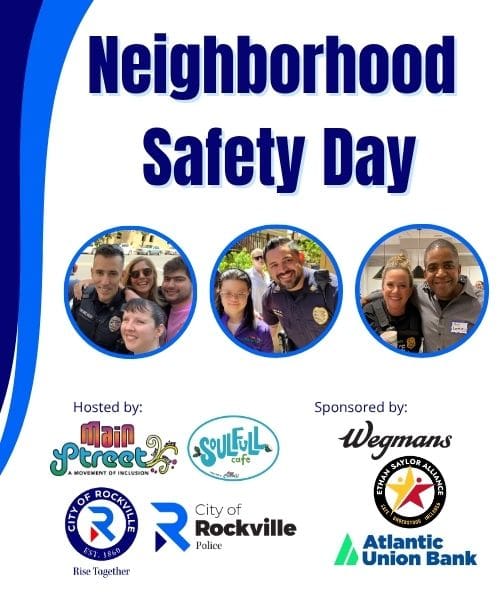The eldest of our four children, Jess, is 28 years old. She works two jobs (in a nursery school and an assisted living facility) and participates in Special Olympics, Best Buddies, and ArtStream. Jess is hardworking, creative, funny, stubborn as heck, and at the center of many of our family decisions. Also, Jess has Down syndrome.
Jess spent her early years in Montgomery County Public Schools, where she was fully included. By the time high school came along, we were exhausted by the constant fight to get her what she needed and opted for a private high school. She attended the Academy of the Holy Cross and then moved on to George Mason University for college. During her four years at George Mason, Jess was part of the Life program, lived on campus, and learned a new level of independence. However, graduation was like falling off a cliff. Finding a job was almost impossible (it took a year) and there was no question of her doing anything other than living at home.
For the next two years, Jess lived at home while we struggled to find a solution. My husband Jim and I have raised her to believe that she can be an independent and productive member of society. In her mind and ours, living at home was not part of that process. We constantly searched for solutions that might allow Jess to be more independent and social but, with such limited options that are in high demand, it was a frustrating process. At one point, we even had a case worker tell us, “I have people who have been on my waiting list for housing for 40 years. Of course, Jess will move up the list if both you and your husband die.” It was a disheartening thing to hear, to say the least.
Eventually we worked with several other families to arrange a structured living situation in which she lives in a house with three other young women with disabilities and a “resident advisor”. Even though she is happier, this new living situation comes with a whole host of challenges. Among them, the families whose daughters live in the house need to spend a substantial amount of time taking care of the long list of things that are needed to “run” a house that provides the girls an appropriate level of support and, at the same time, fosters independence and allows them to have a social life.
I met Jillian on Jess’s birthday. We got together for lunch, but I am not sure I ate anything because I was so excited. Her vision for Main Street is everything that my husband and I have dreamed of for Jess – a housing solution that provides residents with the ability to live independently in a structured community with access to transportation, grocery stores, recreation, support services, social opportunities, and access to therapeutic services too.
So many of the issues that we have struggled with as Jess has moved into her own place can be addressed at Main Street. There will be a more inclusive social environment, as these young adults become part of a Main Street community that includes disabled and non-disabled residents. There will be social programs open to non-residents, thus expanding access to a peer group and friendships. The test kitchen and classroom can be used to help teach the very important life skill of cooking healthy food and there is a gym on site to maintain a healthy lifestyle.
We will always want to provide Jess with the ability to be more independent and to live a happier life, but Main Street offers all of that in a sustainable method that will help Jess to learn and contribute to the community for years to come. We couldn’t be more excited about the opportunity to make this dream a reality and encourage any potential volunteers, donors, or community members to lend a hand wherever they might be able – it will make a world of difference for families like ours.
